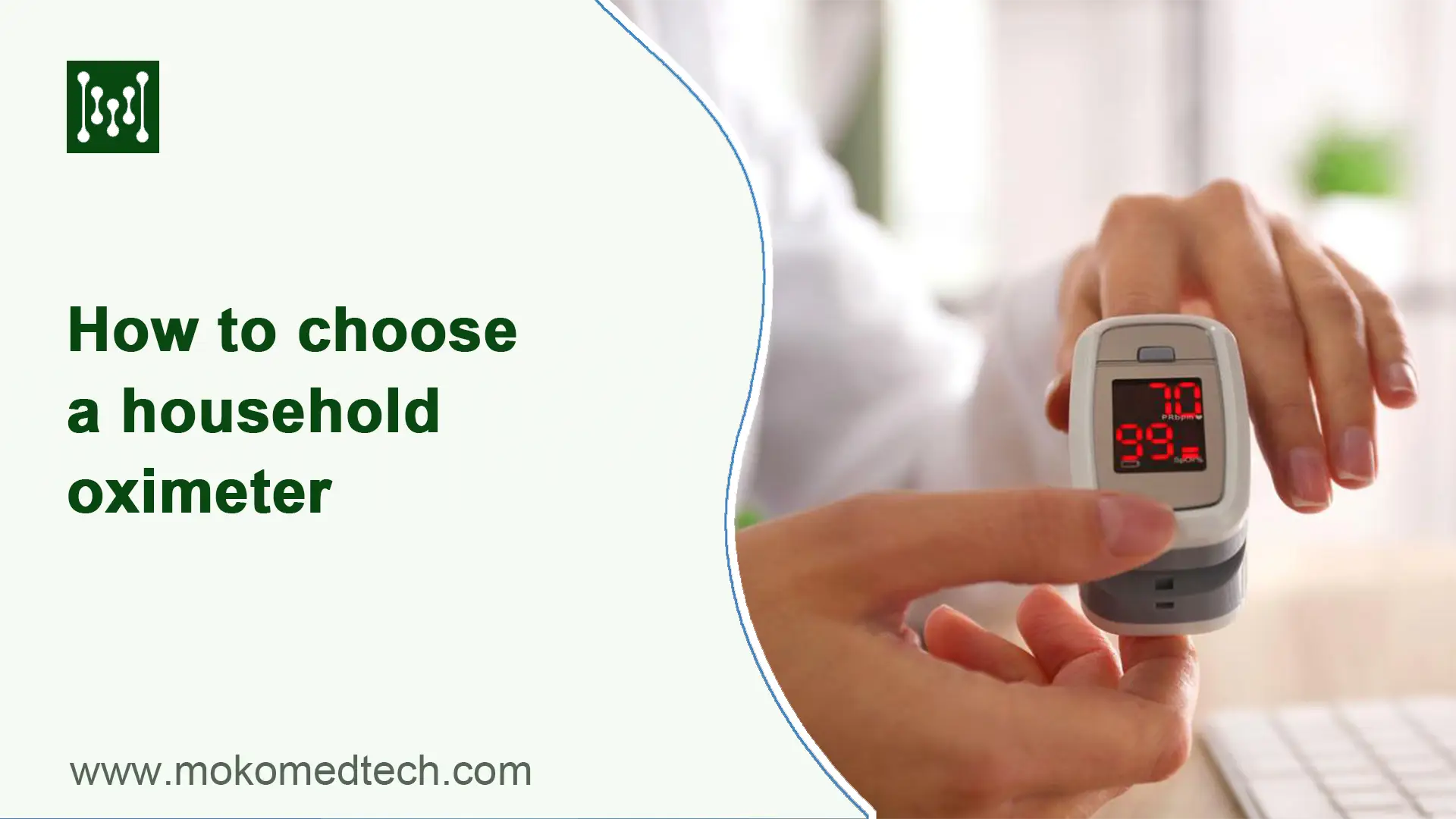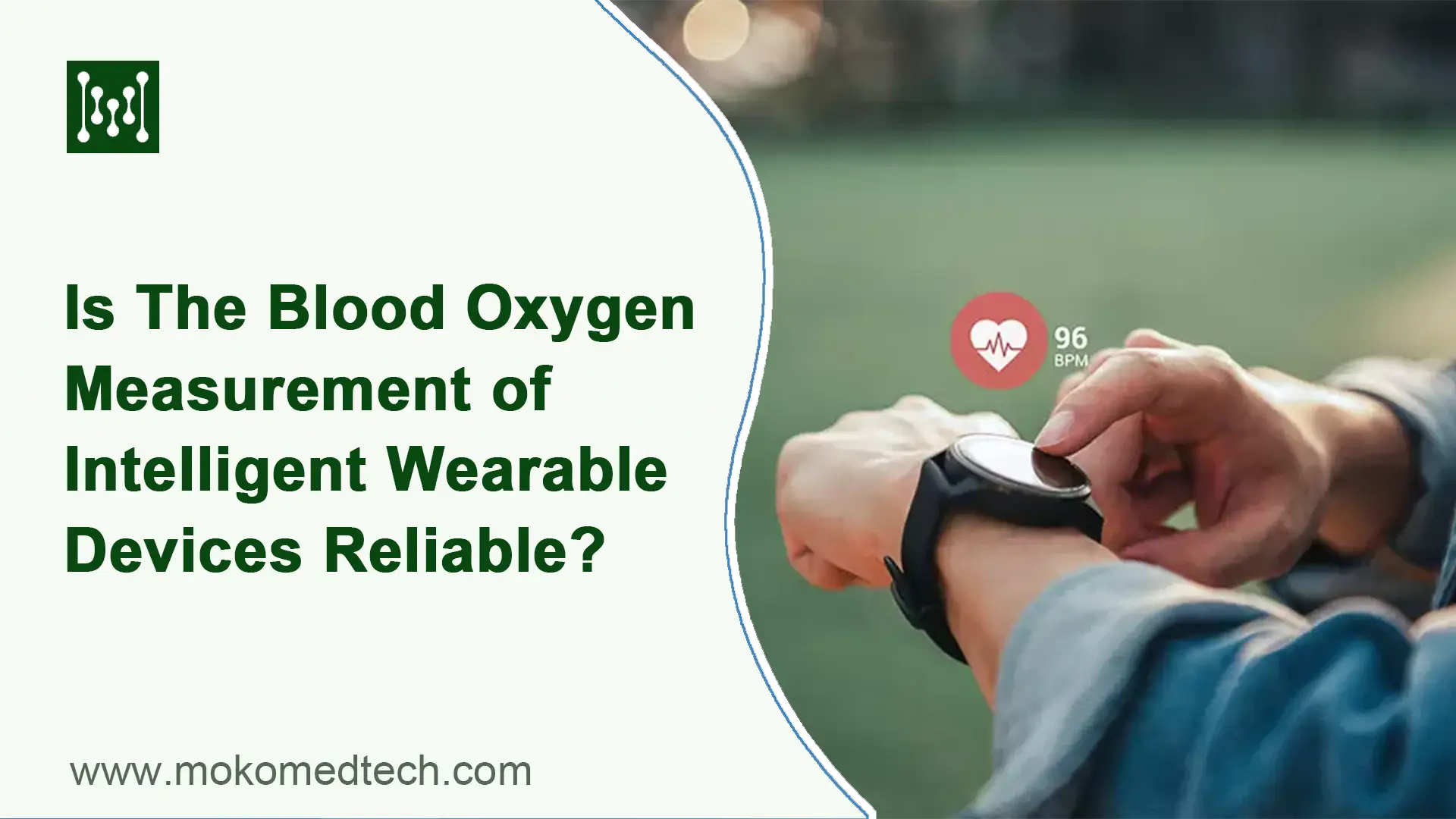This text is for new oxygen therapy users. It introduce whether you need oxygen therapy, varieties of oxygen therapy and some caring tips for you.
Understanding your Diagnosis
The air surrounding us contains oxygen, nitrogen, and other trace gases. Oxygen is colorless, odorless, and tasteless. Our bodies consume oxygen to convert the food we eat into energy and heat ourselves in order to keeping living.
Our oxygen saturation level needs to be at 95-100%. If your lungs aren’t working at their full capacity, they may be unable to absorb the full amount of oxygen that each breath would normally take. Lack of oxygen can lead to a condition called or hypoxemia or hypoxia .
Altitude where you are standing also determines the amount of oxygen in the air. In other words, the higher the altitude is, the less dense the air is. Even if you make the same breathing effort to take in air, less oxygen will go into your lung in practice. This is why some people need supplemental oxygen during high altitudes journey.
What are the symptoms of low oxygen?
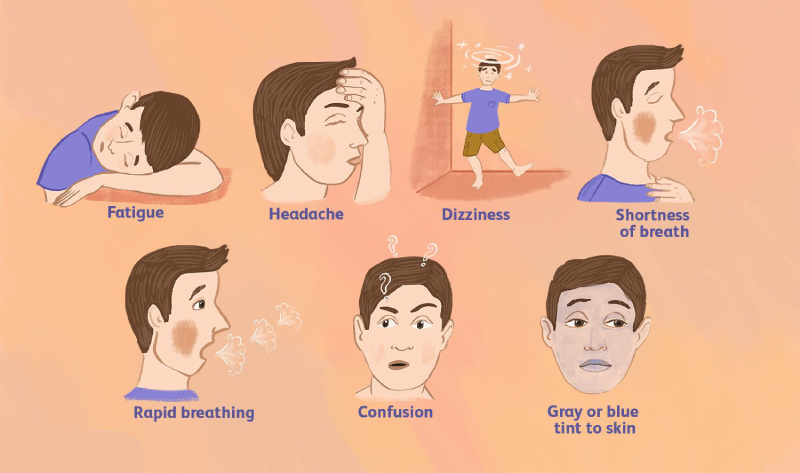
Hypoxemia is generally the presence of low oxygen. It can be clinically perceived by informal respiratory motion, nervous system problems, or gastrointestinal problems. It is advisable to see a doctor to avoid aggravation of disease.
Respiratory problems
Due to the extreme low oxygen content in the blood, patience may get short breath and rapid respiratory rate. Furthermore, respiratory depression may lead to upper-and-lower motion of sternum, clavicle and the intercostal space during inhalation.
Neurological Problems
Hypoxemia will make the brain hypoxia, confusion, headache, coma and so on. Some people may even get decreased orientation and memory decline.
Gastrointestinal Problems
Gastrointestinal discomfort is also one of the clinical manifestations of hypoxemia. Patients usually suffer upper gastrointestinal bleeding, gastric mucosal erosion other symptoms.
The reason is that hypoxemia causes the body to enter a state of stress as well as tissue perfusion volume increases. Thus, small blood vessels in the stomach collapses, resulting in upper gastrointestinal bleeding.
What’s worse, gastric acid may further corrode the defect, causing gastric mucosal erosion. So some people may get gastric mucosal hypoxia.
Who needs oxygen therapy?
Oxygen therapy is prescribed for patients who can’t get sufficient oxygen by themselves. This usually results from lung disease that prevents the lungs from absorbing oxygen, such as:
- asthma
- pneumonia
- heart failure
- sleep apnea
- lung disease
- cystic fibrosis
- bronchopulmonary dysplasia
- trauma to the respiratory system
- underdeveloped lungs in newborns
- chronic obstructive pulmonary disease (COPD)
To identify whether a patient will benefit from oxygen therapy or not, doctors will test his blood oxygen at first. With the development of medical technology, pulse oximeter quicken the blood oxygen test without any requirement of a blood sample. Just clip your pulse oximeter onto your finger, then the data will be clearly showed on the display. If the data is below standard levels, the person may be suitable for supplemental oxygen.
Standard range of blood oxygen are between seventy five and one hundred mmHg. An oxygen level of sixty mmHg or lower shows a risky signal which you should pay serious attention and receive proper oxygen therapy. However, too much oxygen is not a good thing and even can be hazardous to the cells in your lungs. Last, remember that your oxygen level should not above one hundred and ten mmHg.
What is Oxygen Therapy?
Oxygen inhalation (oxygen therapy) refers to the treatment of a patient using a gas with a higher concentration of oxygen than air.
Main purpose: Oxygen inhalation is used to correct hypoxia and increase the level of arterial oxygen partial pressure and blood oxygen saturation
Decision to treatment: Oxygen is required when hypoxemia or respiratory failure. Meanwhile, partial oxygen pressure is below 60mmHg.
Treatment duration: Due to the different use of oxygen inhalation devices, the operation time varies, generally ranging from a few minutes to more than ten minutes.
Recovery time: Bad feelings of the patient were relieved after oxygen inhalation. Health indicators are improved when the blood oxygen saturation. That means the treatment is effective.
What Is Oxygen Therapy Used for?
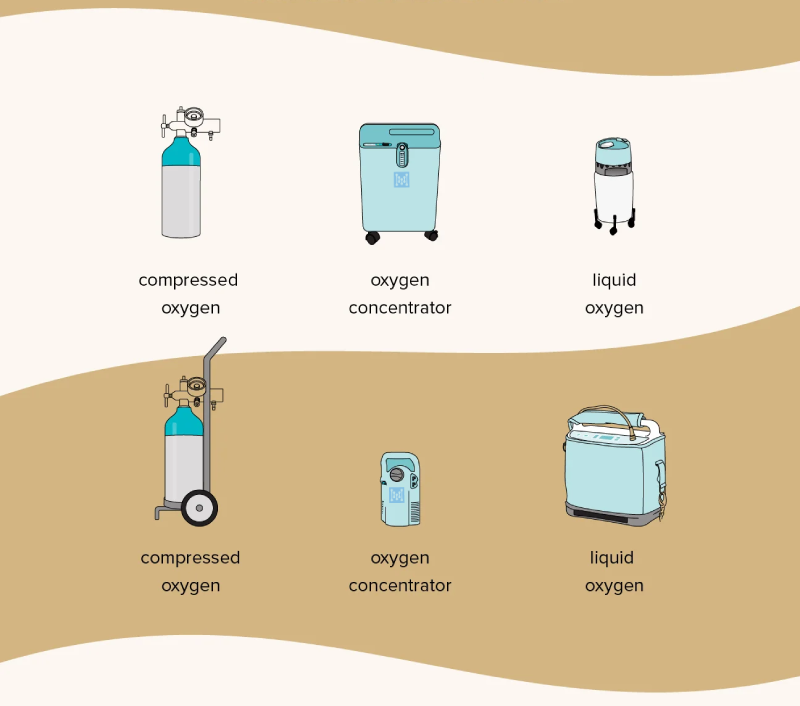
Oxygen therapy refers to the treatment of hypoxia. Generally speaking, it is about giving inhaled oxygen to treat disease or improve symptoms.The adaptation of oxygen therapy with different concentration is different.
Low Concentration Oxygen Therapy
During the therapy, oxygen concentration is less than 40%. It is used in patients with hypoxemia and carbon dioxide retention, such as chronic obstructive pulmonary disease.
Medium Concentration Oxygen Therapy
the oxygen concentration is 40%~60%. It is mainly used in patients with obvious ventilation/perfusion ratio imbalance or significant diffusion disorder, especially in patients with low hemoglobin concentration or inadequate cardiac output, such as pulmonary interstitial fibrosis and shock.
High Concentration Oxygen Therapy
oxygen concentration above 60%. It is used in patients with simple hypoxia without carbon dioxide retention, such as adult respiratory distress syndrome and life support stage during cardiopulmonary resuscitation.
Hyperbaric Oxygen Therapy
100% oxygen inhalation is given in a special pressurized chamber. Mainly applicable to carbon monoxide poisoning, gas gangrene and so on.
What are the different types of oxygen therapies?
There are a number of different types of oxygen therapies that can be used. These include:
- oxygen gas
- oxygen concentrators
- liquid oxygen
Oxygen gas
Oxygen gas can also be stored in a portable tank, which is called compressed gas systems. A larger stationary concentrator is used at home, while a smaller oxygen tank can be taken to use outside the home with cart. The smaller tanks might be used along with oxygen-conserving components so that the oxygen supply can lasts longer. What;s more, The oxygen of tank is delivered in pulses instead of continuously.
Liquid oxygen
Liquid oxygen also can be stored in a portable tank. It is more highly concentrated, so more oxygen can fit in a smaller tank. This is helpful for people who are very active, but it will evaporate if it isn’t used in a timely manner. These tanks are refillable.
Both liquid oxygen and oxygen gas are available for home delivery in many locations.
Oxygen concentrators
Oxygen concentrators are more movable and portable than the other options. An oxygen concentrator is a device which collects oxygen from the room, and then concentrates it for filtering in the step. Finally, the air you breath from the device is very pure to be oxygen supplement.
There are lots of advantages of oxygen concentrators. First, they cost less in sustainable using and don’t require filling oxygen like tanks. Second, portable type are available to liberate patient to outdoor exercises .
Types of Oxygen Delivery Systems
Continuous flow
Continuous flow the most popular mode of oxygen delivery. It continuously flows oxygen at a specified rate and steady.
Pulse dose delivery
It goes by many names including pulse flow, conserving device, and a puffer. Pulse flow, as the name “puffer” suggests, puffs or pulses air into your nasal passageway, through a cannula, with each breath. That means that oxygen is delivered each time you take a breath in just like a pulse. If the rate of your breathing increase, the oxygen concentrator will sense it and accordingly change its pulse to satisfying you breathing rhythm.
In common, your doctor usually determines the type of oxygen flow you need. However, some people use a pulse dose machine with a pulse oximeter to keep track of their oxygen saturation levels.
What Is the Most Common Oxygen Therapy?
Oxygen therapy methods include nasal catheter oxygen inhalation, mask oxygen inhalation, tracheal catheter oxygen therapy and other methods, timely under the guidance of doctors to choose the appropriate way to improve symptoms.
Nasal catheter oxygen inhalation
If the patient has a decrease in blood oxygen concentration in the body, and the degree of damage is not very serious, it can be alleviated by nasal catheter oxygen inhalation. This way can also breathe natural air, suitable for low flow oxygen.
Mask oxygen inhalation method
The oxygen consumption of the mask oxygen inhalation method is relatively large, which is suitable for patients with serious hypoxia concentration, and the concentration of oxygen inhalation can reach 40% to 50%. However, this way is not suitable for eating and sputum discharge, and has certain defects.
Transtracheal Catheter Oxygen Therapy
If the patient’s disease is more serious, has chronic respiratory failure and other diseases, and needs long-term oxygen inhalation, it can be treated in this way, which is conducive to achieving the purpose of alleviating the disease. In addition to the above common methods, it also includes mechanical ventilation oxygen method, electronic pulse oxygen therapy and other ways, which need timely medical diagnosis.
Benefits of Supplemental Oxygen
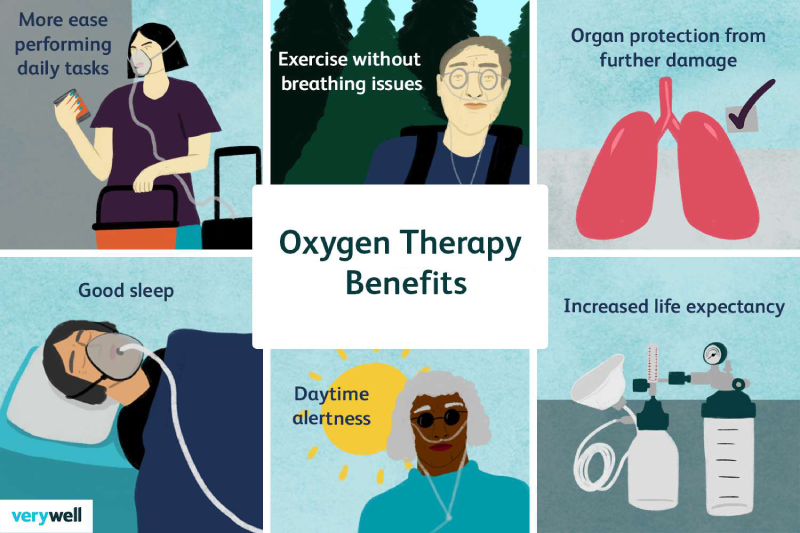
When the symptoms of insufficient oxygen are relieved, and your body is getting the therapy it requires, you may feel an increase in physical energy. Additionally, since oxygen affects brain cell function, you will likely notice an improvement in your overall brain health and functions. The benefits of your oxygen therapy will quickly become apparent as soon as you use your concentrator. Regaining your ability to be physically active will have positive effects on every aspect of your overall health. Even small drops in oxygen saturation can affect the body. For example, 94% saturation tunnel vision is a common symptom experienced.
Are There any Down-Sides to Oxygen Therapy?
Research shows using oxygen can significantly improve your quality of life. However, some people may think once you get used to using supplemental oxygen, you will become more dependent upon it so your natural ability to process oxygen may be weaken. According to professional research, using supplemental oxygen will optimize the natural processes in your body, increasing your overall health as well as decrease excess strain.
How Oxygen Flow is Measured?
Oxygen is a gas, whose flow can be measured in liters per minute. If you require oxygen therapy, your doctor will, according to your test report and health state, prescribe you a specific oxygen flow rate such as two liters per minute. In other words, the patient will have twp liters of oxygen flowing into their nostrils within one minute.
Oxygen prescriptions generally run from one liter per minute to ten liters per minute, with seventy percentage of those patients being prescribed two liters .
High Flow Oxygen
The high flow oxygen has proved its good effects on COPD by professional research.
The Effect of High Flow Oxygen on COPD
Objective
To investigate the clinical effect of nasal high-flow oxygen humidification inhalation on COPD patients and its effect on lung function and inflammatory factors.
Methods
96 patients with COPD admitted to our hospital from July 2020 to February 2022 were randomly divided into study group (n=48) and control group (n=48). In addition to the basic symptomatic treatment, the control group was treated with budesonide and formoterol atomized inhalation, while the study group was treated with nasal high-flow oxygen humidification inhalation on the basis of the control group for 14 consecutive days. The therapeutic effect, lung function and inflammatory factor levels were compared between the two groups.
Results
The total effective rate of the study group was 91.67%, which was higher than that of the control group (75.00%) (P < 0.05). After treatment, the levels of FEV1 and FEV1/FVC in the study group were higher than those in the control group, and the levels of PCT and hs-CRP were lower than those in the control group (P < 0.05).
Conclusion
Nasal high-flow oxygen humidification inhalation is effective in the treatment of COPD patients, which can significantly improve lung function and reduce the level of inflammatory factors
Warning About Over the Counter (OTC)
Some concentrator advertisements online is for non-prescription. Most of them are portable oxygen concentrators. But these are often more affordable. If you suffer a lung disease like pulmonary fibrosis or decrease excess strain. It requires you to use prescription oxygen. Because these OTC devices may not meet your oxygen requirement and it is significant to speak with your healthcare doctor before purchasing.
Takeaway

If you want to know more about oxygen therapy, leave message to us. Or, if you want to customize a batch of oxygen therapy device, please feel free to ask sample from us.

